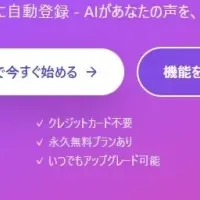
Unlocking New Possibilities: Sony's SDK Version 2.5.0 for Spatial Reality Displays
Sony Electronics Transforms 3D Experience with New SDK Version 2.5.0
Sony Electronics has made a significant stride in the world of immersive technology with the rollout of the software development kit (SDK) version 2.5.0 for its innovative glasses-free Spatial Reality Displays, the ELF-SR1 (15.6 inches) and ELF-SR2 (27 inches). This upgrade, part of Sony's XYN™ brand, marks a pivotal moment for developers looking to create breathtaking spatial content without the need for 3D glasses.
Enhanced Compatibility and Features
The latest SDK version introduces extensive improvements, including enhanced support for OpenXR™, a key framework that bridges the compatibility gap between different platforms and devices. Developers will now enjoy improved performance and broader options when creating applications within familiar game engines. Notably, it strengthens collaboration with renowned design tools such as Autodesk® VRED®, Twinmotion, and NVIDIA Omniverse, making it easier for creators to leverage the capabilities of the Spatial Reality Display.
What's New in SDK 2.5.0?
1. OpenXR Control Panel
A newly developed tool, the OpenXR Control Panel, allows developers to fine-tune their applications with precision. Users can adjust viewpoint movements, control depth perception, and enhance three-dimensionality in their projects, significantly improving the user experience. This interface also simplifies the process of saving and loading custom configurations.
2. Performance Improvements
The upgrade brings notable enhancements to the 3D rendering quality on the ELF-SR2. A new facial position correction algorithm caters to the gaze recognition sensors, ensuring a more accurate and immersive 3D environment. Alongside this, support for High Dynamic Range (HDR) and DICOM formats allows for precise color accuracy in video production, enabling content creators to produce striking visuals even for high-brightness scenarios.
3. Wider Application Support
The SDK has optimized support for the latest versions of popular game engines, including Unreal Engine 5.5 and Unity 6. This positions developers to efficiently bring their ideas to life on the Spatial Reality Displays, ultimately resulting in higher quality and more engaging content. The enhancements in Unity plugin usability further streamline the integration process, empowering developers to produce high-caliber applications with ease.
Implications for Developers
With the introduction of SDK version 2.5.0, Sony Electronics reaffirms its commitment to facilitating creative minds. By bridging gaps in existing technologies and enhancing interoperability among various platforms, the company is paving the way for next-generation applications in diverse fields, from entertainment to education.
As more developers begin to explore the expanded functions of the SDK, we can expect to see groundbreaking projects emerge that harness the full potential of spatial computing. The advancements made by Sony Electronics not only improve the technical standards for developers but also enrich the end-user experience, presenting captivating and immersive journeys in 3D.
Conclusion
The launch of SDK version 2.5.0 stands as a testament to Sony Electronics’ innovative spirit. By enhancing the capabilities of its Spatial Reality Displays, Sony is not just keeping pace with technological advancements but is leading the charge towards a more integrated and interactive future. Developers eager to utilize the new features can download the update and explore the burgeoning possibilities within the realm of spatial content creation.
For more detailed usage information, visit the official user manual.
Topics Consumer Technology)










【About Using Articles】
You can freely use the title and article content by linking to the page where the article is posted.
※ Images cannot be used.
【About Links】
Links are free to use.